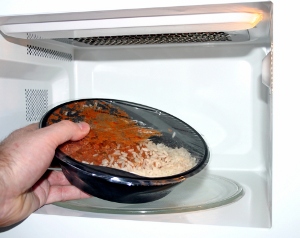 Allied Development Corp., of Burnsville, Minn., recently released its newest study on microwaveable packaging, titled “U.S. Microwaveable Packaging 2012-2016.” The study provides detailed insight into the $1.2 billion U.S. market for microwaveable packaging, and delivers exclusive data and analysis of the industry, market drivers and key trends, as well as market forecasts to 2016, broken down by segments. The report includes several detailed case studies which compare the economic and environmental impact of representative microwaveable packages. To get a copy of the study, visit www.allied-dev.com.
Allied Development Corp., of Burnsville, Minn., recently released its newest study on microwaveable packaging, titled “U.S. Microwaveable Packaging 2012-2016.” The study provides detailed insight into the $1.2 billion U.S. market for microwaveable packaging, and delivers exclusive data and analysis of the industry, market drivers and key trends, as well as market forecasts to 2016, broken down by segments. The report includes several detailed case studies which compare the economic and environmental impact of representative microwaveable packages. To get a copy of the study, visit www.allied-dev.com.
What follows is a Q&A with Ken Sullivan, director of sales & marketing for Allied Development Corp., on some of the insights gleaned from the study.
NP: The obvious reason consumers look for microwaveable protein products has been convenience over the years — is that factor still the primary driver of the demand for microwaveable products overall?
Sullivan: Convenience and time-savings remain the pre-eminent drivers of market growth for microwaveable packaging, consumption of which in the U.S. is projected to grow at more than 7% per year through 2016. Continuing improvements in the taste and texture characteristics of microwaveable food products have played a major role as well.
NP: What other factors have consumers cited as reasons for gravitating toward microwaveable products?
Sullivan: An increasing number of private-label products, which compete with national brands, is reducing the average retail price of the microwaveable-food category compared to non-microwaveable competition.
NP: In the last couple years, what challenges in microwaveable packaging have you seen the industry solve that may have been holding back development in the category?
Sullivan: Consumers prefer products that can be directly placed into a microwave oven without any hands-on activity to modify the packaging by such means as poking holes, cutting slits, peeling back lidstock, etc. Because microwaveable products are generally packaged in hermetically sealed containers, the steam that is generated during microwaving is trapped within these containers, threatening package integrity. Steam was once considered to be a problem for microwaveable packaging because, if it was not released, it would break open the container. Now it is generally accepted by food processors that steam contributes to product quality since it creates an even temperature around the product to promote uniform heating.
Food processors have responded to the steam issue by incorporating an integral vent, essentially a controlled-release feature, within their package structures. The steam created inside the package puts pressure on the release point, eventually causing it to fail, which releases the steam through the opening. Integral venting is often designed to occur in the seal between a tray and lidstock, or between the seals of a flexible package. Once the vent opens, it will never reseal again. The self-venting package can eliminate all consumer handling, increasing convenience and further reducing food preparation time.
NP: Finally, what challenges remain, in particular, for the meat and poultry processing industries, as far as microwaveable products/packaging goes?
Sullivan: Food processors will need to balance their response to seemingly contradictory market drivers: (a) consumers expect more functionality from microwaveable packaging – e.g., clear and simple instructions, serving suggestions, pop-up timers, etc.; (b) consumers are increasingly sensitive to the volume and type of packaging that are used for food products; complaints about “overpackaging” will hurt brand sales.



